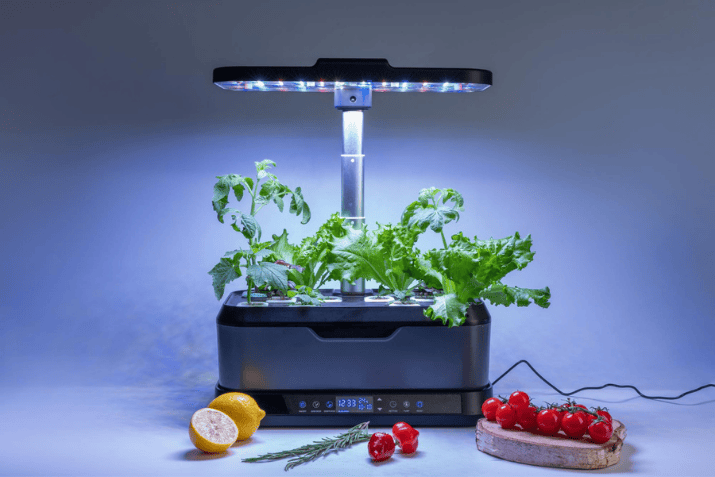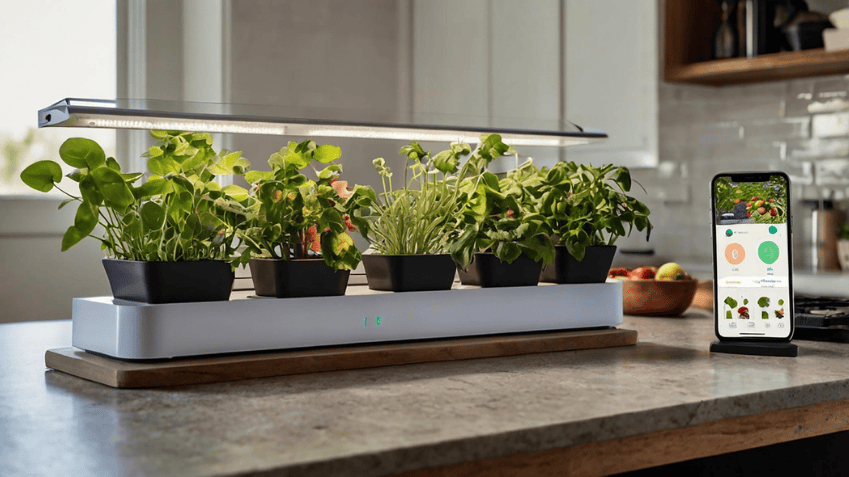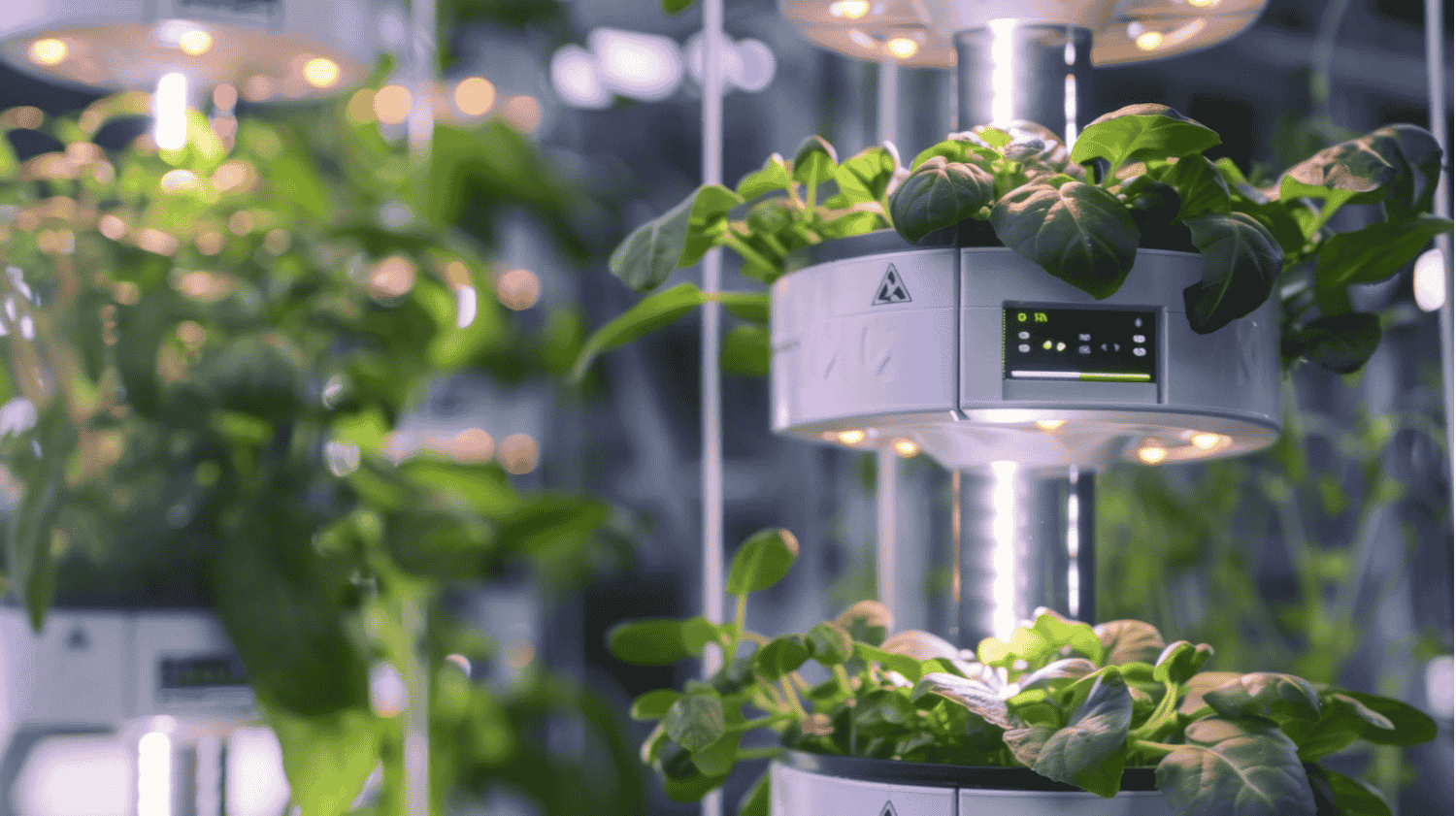🚀 Revolutionize Your Gardening with Smart Technology
Vertical gardens are already an innovative way to maximize space and grow plants in compact environments. 🌿 Pairing them with smart technology takes home cultivation to a new level, offering convenience, efficiency, and precise control over plant growth. 💡
This guide explores how smart vertical gardens work, their benefits, and the cutting-edge technologies transforming indoor gardening. 📱
🤖 What is a Smart Vertical Garden?
A smart vertical garden integrates technology to automate and optimize gardening tasks such as watering 💧, lighting 🌞, and monitoring 📊. These systems are designed to make gardening easier, especially for beginners or those with busy lifestyles, while ensuring optimal conditions for plant growth. 🌱
🌍 Benefits of Smart Vertical Gardens
✅ Automation: Smart systems handle watering, lighting, and fertilization, reducing manual effort. 🛠️
✅ Efficiency: Sensors and automation minimize resource waste, such as water and energy. ♻️
✅ Precision: Real-time monitoring ensures plants receive the exact care they need. 📡
✅ Convenience: Remote control via apps 📱 allows you to manage your garden from anywhere.
✅ Accessibility: Makes gardening feasible for those with limited time or experience. ⏳
💡 Exploring Alternatives for Low-Cost Smart Gardens

Not everyone can invest in premium smart garden systems, but there are affordable ways to create your own version:
💸 DIY Automation: Use affordable timers ⏲️ and sensors to replicate watering schedules.
♻️ Recycled Materials: Build vertical garden structures using recycled pallets or shelves.
🔧 Open-Source Solutions: Explore open-source projects with microcontrollers like Arduino for custom automation.
🌱 Detailing Environmental Benefits
Smart vertical gardens contribute significantly to environmental sustainability:
✅ Water Conservation: Automated irrigation systems ensure precise watering, reducing waste. 💦
⚡ Energy Efficiency: LED grow lights use less energy than conventional options.
🌎 Reduced Food Miles: Growing food at home minimizes the carbon footprint from transporting produce.
🛡️ Tips for Maintaining Your Smart Garden
To ensure your smart garden operates smoothly:
📶 Check Connectivity: Regularly update apps and ensure stable Wi-Fi for smooth operation.
🔍 Sensor Calibration: Recalibrate sensors periodically for accurate readings.
🧽 System Cleaning: Clean water tanks and sensors to prevent clogs or malfunctions. 🧼
🔑 Key Technologies in Smart Vertical Gardens
1️⃣ Automated Irrigation Systems 💧
- How It Works: Sensors detect soil moisture and water plants as needed.
- Benefits: Prevents overwatering and ensures consistent hydration.
Example:
🎥 Want to see how automated irrigation works in practice? Watch this video and discover how smart drip irrigation controllers can simplify plant care!
💡 Want to learn more about efficient maintenance? Explore our article on Automate Your Garden: Irrigation Systems for Vertical Gardens and discover how to keep your garden healthy with minimal effort! 🌱
2️⃣ LED Grow Lights 🌞

- How It Works: Full-spectrum lights mimic natural sunlight with adjustable settings.
- Benefits: Ideal lighting for photosynthesis, even in low-light spaces.
- Example: Lights simulating sunrise and sunset cycles.
3️⃣ Smart Sensors 📡
- How It Works: Measure temperature 🌡️, humidity 💦, and light intensity.
- Benefits: Provides real-time plant health data.
- Example: Soil moisture and climate sensors.
4️⃣ Mobile App Integration 📱

- How It Works: Control and monitor your garden remotely through apps.
- Benefits: Sends alerts and enables easy adjustments.
- Example: Notifications for low water or fertilizer levels.
5️⃣ Automated Fertilizer Dispensers 🥗
- How It Works: Release nutrients at set intervals.
- Benefits: Consistent nutrition for plants.
- Example: Smart fertilizer pods.
6️⃣ Hydroponic and Aeroponic Systems 🌊
💡 How It Works: Soilless growing methods that use water or mist to deliver nutrients directly to the roots.
🌿 Benefits: Faster growth, efficient space usage, and fewer soil-related issues.
👉 Watch the full video below 🎥 to learn how to build your own DIY aeroponics system at home and take your smart vertical gardening to the next level! 👇
🌟 Top Smart Vertical Garden Systems
Explore the leading smart vertical garden systems designed to bring efficiency, convenience, and modern technology to home cultivation:
🌱 Click & Grow Smart Garden 💡
✅ Beginner-Friendly: Pre-set for specific plants, making it perfect for those new to gardening.
💧 Features: Integrated LED grow lights and self-watering reservoirs ensure plants receive consistent care with minimal effort.
🌿 AeroGarden 🥗
✅ Ideal for Herbs and Vegetables: Aeroponic system designed for fast-growing greens like basil, lettuce, and cherry tomatoes.
💧 Automation: Offers fully automated lighting and watering, allowing you to grow fresh produce indoors year-round.
🧩 Green Wall Kits with IoT 🌍
✅ Modular Design: Customizable panels suitable for both indoor and outdoor use.
📱 Smart Features: Equipped with sensors and app connectivity to monitor plant health and environmental conditions in real-time.
🏢 Smart Planter Towers 🌱
✅ Space-Saving: Vertical towers specifically designed for hydroponic growing in compact spaces.
💡 Integrated Technology: Built-in pumps, programmable timers, and adjustable LED grow lights make plant care effortless.
🤖 Gardyn 🌿
✅ AI-Driven Care: Uses artificial intelligence to provide personalized plant care suggestions and alerts via a connected app.
🏠 Compact Design: Perfect for small living spaces, with vertical modules that maximize growing capacity.
🌱 Plantui 💧
✅ Fully Automated: Features hydroponic growing pods that automatically manage watering, lighting, and nutrient delivery.
🎨 Stylish & Modern: Sleek design complements urban homes while providing fresh herbs and greens year-round.
❓ FAQ
🔆 Can smart vertical gardens use solar energy? Yes, many systems are compatible with solar panels for added sustainability. ☀️
🌿 Which plants thrive in these systems? Herbs 🌱, leafy greens 🥬, and small fruits like strawberries 🍓.
🌦️ Are these systems suitable for outdoors? Check weather resistance, but many models work outside.
🏙️ Social Impact and Accessibility
Smart vertical gardens can democratize gardening by:
🌎 Urban Access: Makes gardening possible in apartments.
🍽️ Food Security: Encourages self-sufficient communities.
👵 Inclusivity: Easy for seniors or people with disabilities.
🛠️ How to Set Up a Smart Vertical Garden
- Choose Your System: Match it with your space and budget. 💵
- Install and Connect: Set up and link to Wi-Fi or an app. 📶
- Add Plants: Insert seedlings or pods. 🌱
- Monitor and Adjust: Use app controls to customize care. 🖥️
- Enjoy the Results: Watch your plants thrive with ease. 🌿
🚧 Common Challenges and Solutions
💰 Initial Cost: Start small and upgrade later.
🛠️ Technical Glitches: Keep software updated.
🌱 Limited Plant Choices: Choose systems with wide compatibility.
🚀 Future of Smart Vertical Gardens
Emerging innovations like AI-assisted care 🤖, solar-powered systems ☀️, and advanced hydroponics 🌊 will shape the next wave of smart home gardening.
🌱 Conclusion: A Smarter Way to Garden
Smart vertical gardens combine lush greenery 🌿 with modern technology 🖥️, offering an effortless way to enjoy homegrown plants. Whether you’re tech-savvy or just starting out, these systems make cultivating your own indoor oasis simpler than ever. 🏡✨

